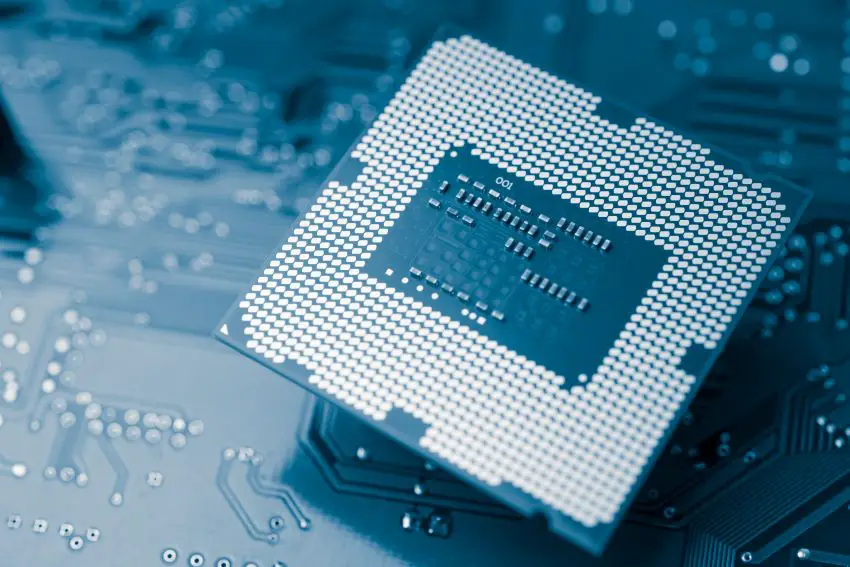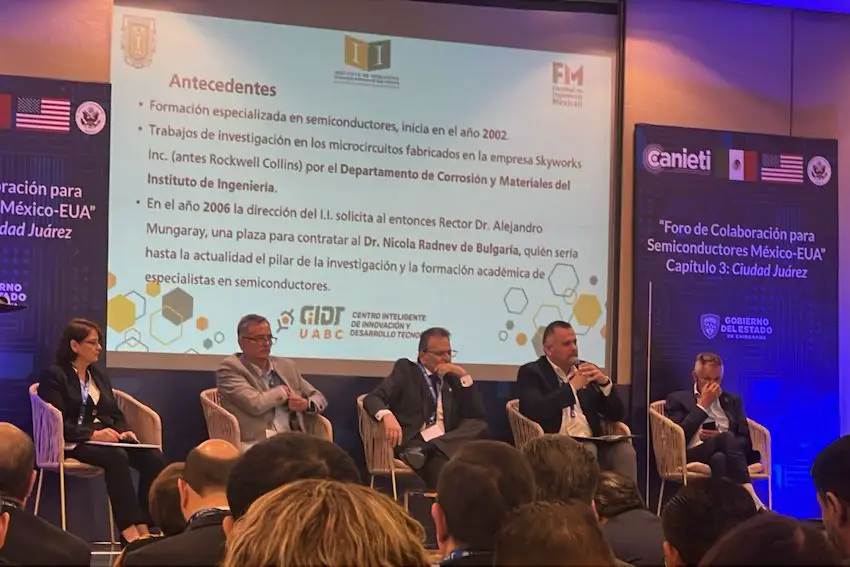Mexico and US present semiconductor industry roadmap

On Oct. 16, the United States Embassy in Mexico and the National Chamber for the Electronic, Telecommunications and Information Technology Industry, (Canieti) presented a joint Master Plan for the Development of the Semiconductor Industry in Mexico for 2024 to 2030.
The new plan outlines several targets including doubling both exports and jobs in the semiconductor industry and relocating design, assembly, packaging and verification operations — manufacturing activities valued at a combined US $10 billion — to Mexico.

At present, Mexico’s semiconductor industry generates around US $4.9 billion a year in exports and employs around 10,000 people.
The plan seeks to bring those numbers to $9.8 billion and 20,000 people, respectively, in the next five years.
Mexico produces a wide range of products requiring microchips, including computers, mobile phones and other technology devices.
In addition, the development of the semiconductor industry could expand Mexico’s role in the production of electric vehicle (EV) components, reducing the need for imports from other parts of the world.
🚨Last August, Mexico overtook China and Taiwan to become the U.S.’s leading supplier in advanced technology products 🚀📈 #USMCA #NorthAmerica#USMCAInsights pic.twitter.com/UA9o7hinUZ
— Diego Marroquín Bitar (@DiegoTMEC) October 21, 2024
Last week, during the 30th annual Mexican Business Congress on Foreign Commerce, Investment and Technology held in Aguascalientes, Luis Rosendo Gutiérrez, the subsecretary of foreign trade in the Economy Ministry, emphasized the “big appetite from American and Mexican investors to create a microchips boom in Mexico.”
Rosendo also shared that the Finance Ministry is designing a program of tax incentives similar to those established by the U.S. Inflation Reduction Act and CHIPs Act to develop the semiconductor industry in Mexico and spur technological innovation.
These incentives provide two major forms of semiconductor manufacturing support: $38.22 billion in direct funding through the Department of Commerce (including $500 million allocated to seven non-U.S. countries like Mexico), and a 25% tax credit called the Advanced Manufacturing Investment Credit (AMIC). The AMIC applies to qualified investments in buildings and depreciable property used primarily for manufacturing semiconductors or semiconductor equipment.
“We must incentivize all these industries that are going to come to us [due to nearshoring]. We have to be strategic,” Rosendo said. “And we have to be strategic with what Canada and the United States want to bring from Asia. Are we ready? What are those industries? Semiconductors, electric vehicles, batteries, rare minerals … this does not mean that we are not going to work with all sectors of the economy, but I would say that those are the areas where we are paying close attention,” he said.
The announcement of the master plan comes just one week after Foxconn announced it will build a huge factory in Guadalajara, Jalisco, where it will assemble “superchips” for U.S. technology company Nvidia.
On Tuesday, Antonio Lancaster-Jones González, coordinator of the Jalisco Chamber of Industrial Commerce, revealed that four multinational companies in addition to Foxconn plan to invest in the construction of semiconductor factories in the Guadalajara metropolitan area. He did not specify the names of the companies.
With reports from El Economista, Tax Today Mexico, Forbes and Oilprice
Source: Mexico News Daily

